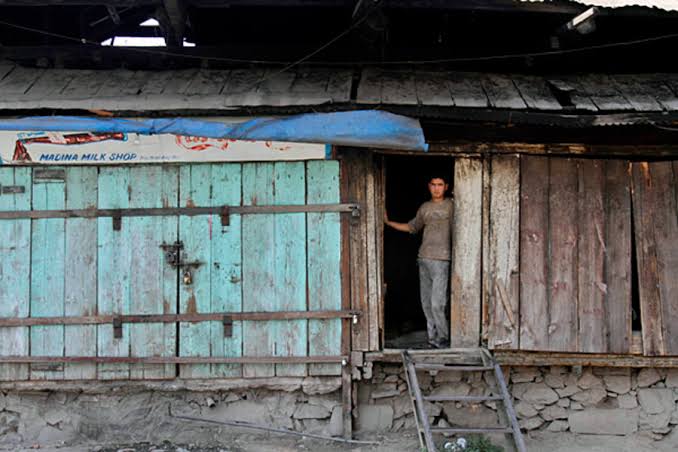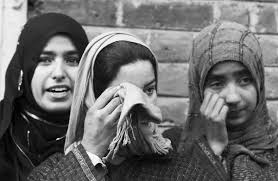The Mental Health Crisis in Kashmir
- Khushi Vedmehta

- Aug 7, 2020
- 3 min read
Mental, physical and social wellbeing, are indispensable strands of life that are closely interwoven and deeply interdependent. Mental issues influence people at all ages, ladies and men, the rich and poor, from urban and provincial environments. Depression is more probable after particular classes of experience – those including strife, interruption, misfortunes and encounters of mortification or entrapment. Many people living amidst the rages of conflict suffer from post-traumatic stress disorder.
The situation has escalated as India cinches down on hostile to government fights and a decades-in length rebellion. Conflict deaths rose to 10 years high a year ago. The Kashmir valley has been on lockdown since 5 August 2019 when India moved to strip Jammu and Kashmir of its statehood and semi-self-sufficient status, forcing curfews, cutting off correspondences, and boosting troop levels in an already heavily militarized region.
The stigma and lack of awareness on Mental Health are partly to blame. Be that as it may, practically all psychological well-being administrations are moved in Srinagar's medical clinics, meaning they're frequently difficult to reach to patients in rural territories – an issue declined by ramped-up security and checkpoints during the underlying months of the lockdown.
“When these patients come back to us after a long gap, we mostly find that the condition of these patients has worsened, making it more difficult to treat them,” said Dr Saleem Yousuf, a psychiatrist at Srinagar’s Shri Maharaja Hari Singh, the region’s main hospital.
Communities and societies face situations of the outfitted clash. While this pattern is clear in various parts of the world, it is of specific worry toward the South Asian locale.
Violence is for class-based social orders which are intrinsically inconsistent and severe. Violence here may either take certain structures in the way of regulated persecution and disparity, or a more unequivocal type of state abuse using state-authorized foundations, for example, the police, the military and courts. It could even expect a more straightforward structure, whereby regular citizens deal with the assignment of a debilitated state through local army groupings. A lot of violence may likewise appear as mass uprisings against the persecution of predominant classes.
Civilians are increasingly being focused in these scenes of contemporary brutality. To decrease military losses, regular folks are utilized as defensive shields; torment, assault and executions are done to subvert confidence and to destroy the social connections and confidence of the populace. Most civilians witness war-related horrendous mishaps, for example, shooting, murdering, assault and loss of relatives. The degree of psychological issues that outcomes from this mass introduction to horrendous accidents can, at last, undermine the possibilities for long-term stability in society.
In spite of developing proof in the course of recent many years of the dread – both of the physical and mental components of war upon civilians – a lot of post-struggle movement will in general focus on physical recreation – streets, scaffolds and structures.
Additionally, despite the fact that mental and clairvoyant wounds can have all the more harming, long-term results as different wounds from a circumstance of contention, they stay undetected and separated from any designs for restoration. Partly this is on the grounds that these wounds are hard to comprehend as far as the tremendousness of scale and the deferred indication of side effects which can some of the time take a very long time to surface.
Physical brutality might be simpler to distinguish, name and evaluate than psychic or symbolic violence.
Kashmir has been viewed as a paradise on earth. Its beauty and accommodating populace is unbelievable. In the course of recent years, Kashmir became associated with violence and terror.
Because of proceeding with the struggle in Kashmir during the last 18 years, there has been an increment in psychiatric morbidity.
The prevalence of depression is 55.72%.
Emotional well-being is an indispensable piece of by and large wellbeing and personal satisfaction. Compelling proof-based projects and programs are accessible to advance psychological wellness, improve versatility, lessen hazard factors, increment defensive factors, and forestall mental and social issues.
Creative group based wellbeing programs which are socially and sexual orientation suitable and contacts all fragments of the populace should be created. Significant and maintainable enhancements can be accomplished just when a far-reaching technique for psychological well-being which joins both counteraction and care components is received.
Wellbeing administrations ought to have the option to give the genuinely necessary treatment and backing to a bigger extent of the individuals experiencing mental issues than they get at present: benefits that are more successful and more others conscious; medicines that assist them with keeping away from ceaseless handicap and unexpected passing; and bolster that gives them a real existence that is healthier and richer – an actual existence lived with dignity, Putting resources into emotional wellness today, can help make the future a little happier.
Author: Khushi Vedmehta (IG - @khushivedmehta)










Comments